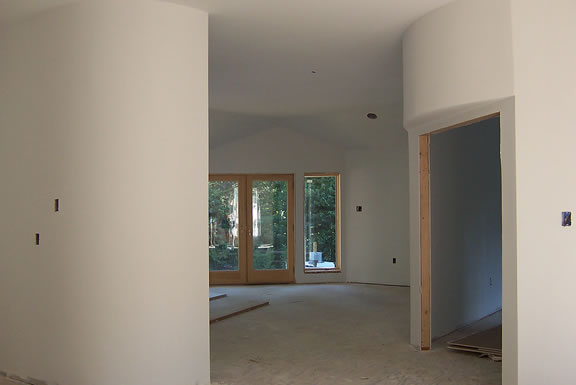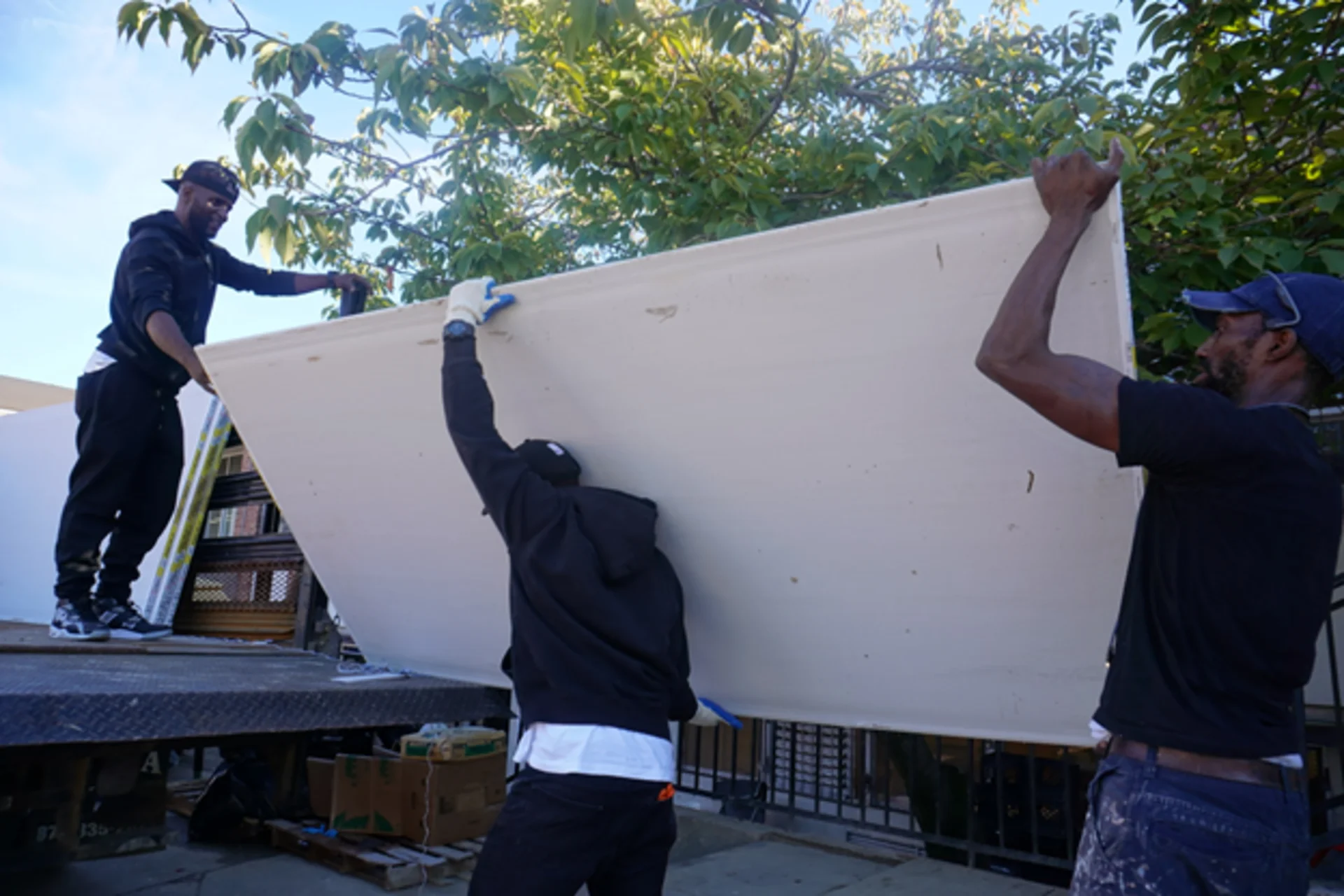Dependable Drywall Installation Solutions for each Space
Dependable Drywall Installation Solutions for each Space
Blog Article
Drywall Setup Facilitated: Tips for Perfect Results
Drywall installment is usually viewed as a difficult task, yet with the best approach and understanding, it can end up being a convenient endeavor. Selecting high quality materials and preparing the installation area are important initial steps that establish the structure for success. Understanding methods for reducing, hanging, and ending up drywall can substantially impact the end result. As we discover these crucial suggestions, you may locate that also the smallest changes in your method can bring about incredibly enhanced outcomes, leaving you to take into consideration how these practices can transform your following project.
Choosing the Right Materials
Selecting the suitable materials for drywall installment is important to accomplishing a durable and visually pleasing coating. drywall contractor. The main element, drywall sheets, typically can be found in different densities, with 1/2-inch sheets being typical for interior walls. For locations requiring added wetness resistance, such as washrooms or cooking areas, take into consideration making use of environment-friendly board or cement board, which are specially created to stand up to moisture

In addition, choosing the appropriate bolts-- either screws or nails-- is necessary for securing the drywall to the framing. Drywall screws are usually preferred for their holding power and lowered threat of standing out. Lastly, take into consideration the finishing touches such as primer and paint, which not just enhance the appearance however also shield the drywall from moisture and wear.
Preparing the Installation Area
Prior to beginning the drywall installment procedure, it is vital to prepare the installation location completely. This prep work involves a number of essential actions to ensure a smooth and effective task. Clear the location of any type of furniture, appliances, or obstructions that can impede access. A tidy workspace minimizes the threat of damage to existing products and enables reliable movement throughout installation.
Next, examine the wall surfaces and ceiling for any kind of imperfections, such as cracks, holes, or mold and mildew. Address these concerns ahead of time; spot any type of damages and permit enough time for fixings to completely dry. In addition, ensure that electric outlets, buttons, and pipes are appropriately positioned and accounted for, as this will certainly affect drywall positioning.
Take into consideration the environmental conditions as well. A steady temperature and humidity degree are essential for optimum attachment and performance of the drywall materials. If needed, use a dehumidifier or heating unit to produce suitable problems.
Cutting and Hanging Drywall
The key to reliable drywall setup depends on the precise cutting and hanging of the panels. Begin by measuring the space accurately, taking into consideration any type of blockages such as electric outlets or home windows. Make use of a straight edge and an utility blade to score the drywall along your measurements, then snap it along the racked up line for a clean break. For more detailed cuts, such as around outlets, a drywall saw can be used for accuracy.

Constantly function from the top down and delegated right, guaranteeing that you keep a staggered pattern to enhance security. Properly hanging the drywall establishes the structure for a smooth coating, eventually leading to exceptional lead to your drywall project.
Taping and Mudding Techniques
While proper cutting and dangling of drywall sets the stage, the next crucial action involves mastering taping and mudding strategies to make sure a smooth coating. Taping is essential for strengthening joints and avoiding fractures; it includes embedding tape right into the applied joint compound (mud) Beginning with a top quality fiberglass or paper tape, applying the tape over the joint and pressing it into the damp mud making use of a taping knife, ensuring no air bubbles continue to be.
When the tape remains in place, apply a slim layer of joint compound over the tape, feathering the sides to produce a smooth transition to the drywall surface area. Enable this layer to dry totally prior to sanding it lightly to get rid of blemishes. Repeat this procedure, applying extra layers of mud as needed-- typically 2 to 3 coats-- while slowly expanding the application area with each layer to accomplish a smooth appearance.
After the final layer dries, sand the surface area with a fine-grit sandpaper up until smooth. drywall installation. Bear in mind to use a mask during fining sand to prevent inhaling dust bits. Mastering these taping and mudding techniques is important for attaining a professional-quality surface in your drywall installation
Completing Touches for Excellence
Attaining a remarkable drywall setup surpasses mudding and taping; it finishes in the finishing touches that raise the overall look. These last steps are important in making certain a professional-grade surface that boosts the aesthetics of your room.
Begin by fining sand the dried out joint substance to create a smooth surface area. drywall repair. After sanding, wipe down the walls with a moist fabric to get rid of any dirt bits, ensuring a tidy surface for painting.
Following, use a primer particularly designed for drywall. This step is crucial, as it aids secure the joint substance and gives a consistent base for the topcoat. As soon as the primer dries, examine for any kind of imperfections, and touch up as required.
Verdict
To conclude, successful drywall installation depends upon the careful choice of materials, complete prep work of the installment location, and accurate execution of reducing and hanging techniques. Proficiency of taping and mudding processes is vital for achieving a smooth surface. Additionally, attention to ending up touches, including priming and touch-ups, guarantees a professional-grade outcome. By sticking to these guidelines, the high quality of handiwork can be dramatically enhanced, adding to the general visual and performance of the space.
Drywall setup is typically viewed as a difficult task, yet with the right approach and understanding, it can become a convenient venture.Picking the appropriate products for drywall installation is crucial to Home Page attaining a resilient and visually pleasing coating.Prior to starting the drywall installation procedure, it is essential to prepare the installation location completely. Grasping these taping and mudding techniques is important for achieving a professional-quality surface in your drywall setup.
In verdict, effective drywall installment pivots on the mindful option of materials, complete prep work of the setup area, and accurate execution of reducing and hanging methods.
Report this page